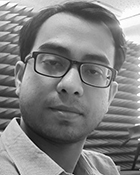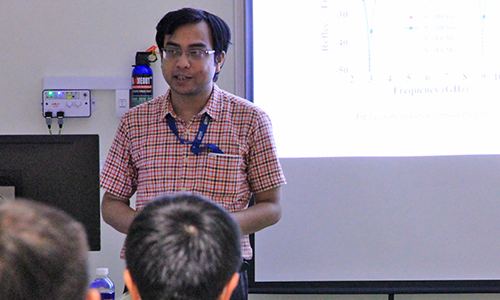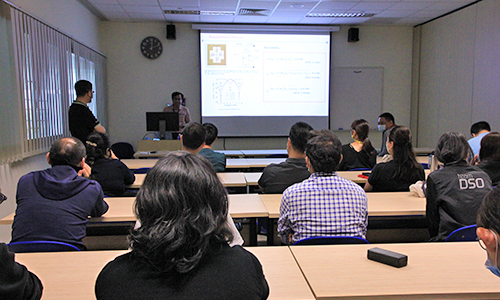Seminar
Reconfigurable Rasorbers: The New Era of Stealth Technology |
| 21 July 2022, Thursday, 11:00 - 12:00pm | Speaker: Dr. Saikat Chandra Bakshi, Research Fellow, Department of Electrical & Computer Engineering, NUS |
| Venue: Seminar Room 8D-1, Level 8, Temasek Laboratories | Event Organiser Host: Dr. Chia Tse Tong |
|
ABSTRACT |
The advent of electromagnetic absorbers almost half a century ago, have enabled several applications, with the main goal to reduce radar cross section (RCS) of weapon/antenna system. However, due to placement of lossy absorber structure close to the radiating element (antennas), the overall radiation performances degrade rapidly. To overcome such difficulties, the structures called frequency selective absorbers (or rasorbers) are proposed, offering in-band signal transmission window along with out of band RCS reduction capability. However, previously only passive rasorbers could be developed that are not enough for fifth generation of stealthy aircraft system. For present demand of stealthy aircraft/missile systems, the use of reconfigurable rasorbers are inevitable. The talk will highlight a series of research outcomes on the design of absorbers and mostly on reconfigurable rasorbers. The main aim is to provide the audience a perspective of difficulties and challenges that are present to design the latest (5G) Stealthy aircraft/missile system. To avoid eavesdropping by hostile systems, the communication frequency need to be varied continuously. However, previously no radome/rasorber could be developed that can provide such frequency tuning characteristics. The talk will consist of the elaboration of different techniques that have been introduced to design a tunable rasorbers. Further, research outcomes to develop a fully reconfigurable rasorber will also be highlighted. The idea to accommodate all the rasorber modes in a single structure will also be discussed. The most advanced form of reconfigurable rasorber, i.e. multifunctional rasorbers will also be highlighted which is believed to be the most suitable for present highly demanding AESA (Active Electronically Scanned Array Radar) system. |
| ABOUT THE SPEAKER |

Dr. Saikat Chandra Bakshi was born in Kolkata, India. He received the B.Tech. degree in Electronics and Communication engineering from the West Bengal University of Technology (currently MAAKUT), Kolkata, the M.Tech. degree in electronics and communication Engineering (specialization: microwaves) from The University of Burdwan, India, and PhD degree from Indian Institute of Engineering Science and Technology Shibpur, India. Presently he is working as a Research Fellow in the ECE Dept of NUS Singapore on Flexible Phased Array Antennas. Dr. Bakshi worked with Space Application Centre at Indian Space Research Organisation, Ahmedabad, India, where he had worked for NISAR (NASA-ISRO Synthetic Aperture Radar) Mission which is an ambitious project of US-India joint venture. He worked extensively on phased array and reflect-array antennas for satellite communication with the Antenna System Group (ASG). Dr. Bakshi was the prime contributor on the work of implementation of periodic and aperiodic tiling (Penrose Tiling) mechanism on the reflect-array/phased array systems which was the first in its kind. The key role played by him was to introduce new theoretical techniques to model and implement different types of array systems with fundamental ideas from Applied Mathematics. During his doctoral studies he worked extensively on metamaterials, frequency-selective surfaces and mostly on rasorbers and polarization converters. He has worked with several joint research projects with some universities like The Ohio State University, USA, Korea Advanced Institute of Science and Technology (KAIST), South Korea and The Roma Tre University, Italy etc. |



